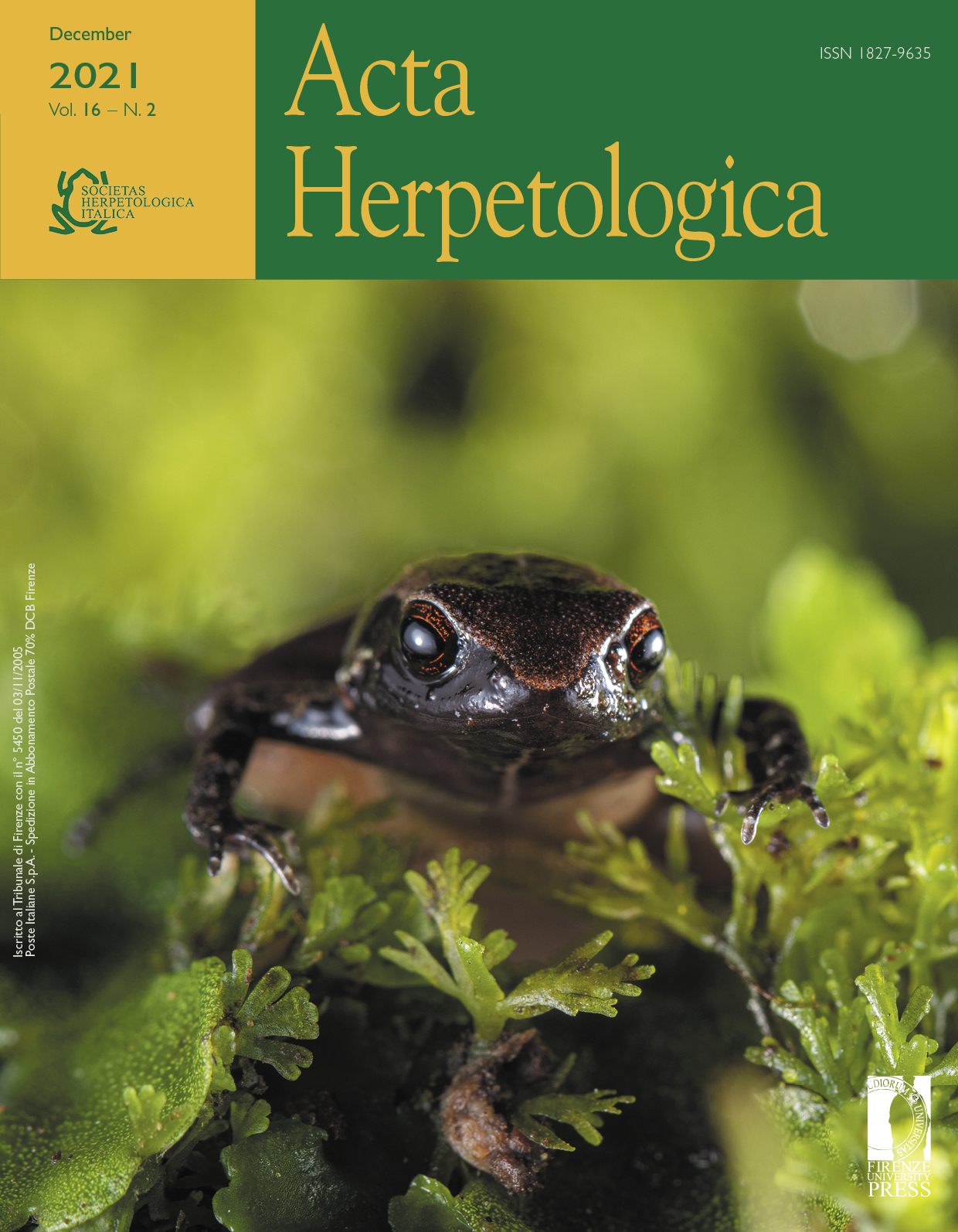Sexual size dimorphism in the tail length of the Caspian Whip Snakes, Dolichophis caspius (Serpentes, Colubridae), in south-western Hungary
Published 2021-09-17
Keywords
- Colubridae,
- Hungary,
- sexual size dimorphism,
- tail length
How to Cite
Abstract
Sexual size dimorphism is widespread among snakes and has also been observed in lengths of body appendages such as in tails. Males typically possess longer tails than females and this dimorphism in tail length has generally been attributed to the importance of the tail in mating and reproduction. We used body size measurements, snout-vent length (SVL) and tail length (TL) as well as a body condition index (BCI) as a measure of quality in Caspian Whip Snakes from Hungary, in order to shed light on sexual dimorphism patterns. The SVL of males (1061 ± 133 mm, n = 25) were significantly longer than that of females (887 ± 208 mm, n = 41). However, the proportion of TL to total length was lower in males than in females (0.257 ± 0.018 and 0.274 ± 0.017, respectively). The BCI of females (386 ± 10) was significantly higher than that of males (343 ± 15). Females having proportionally longer tails compared to males seems to be the reverse of the usual trend. Selective pressures on the tails of female snakes are less obvious, as tail length may be linked to more than one function, and hence be simultaneously subjected to more than one type of selective force.







